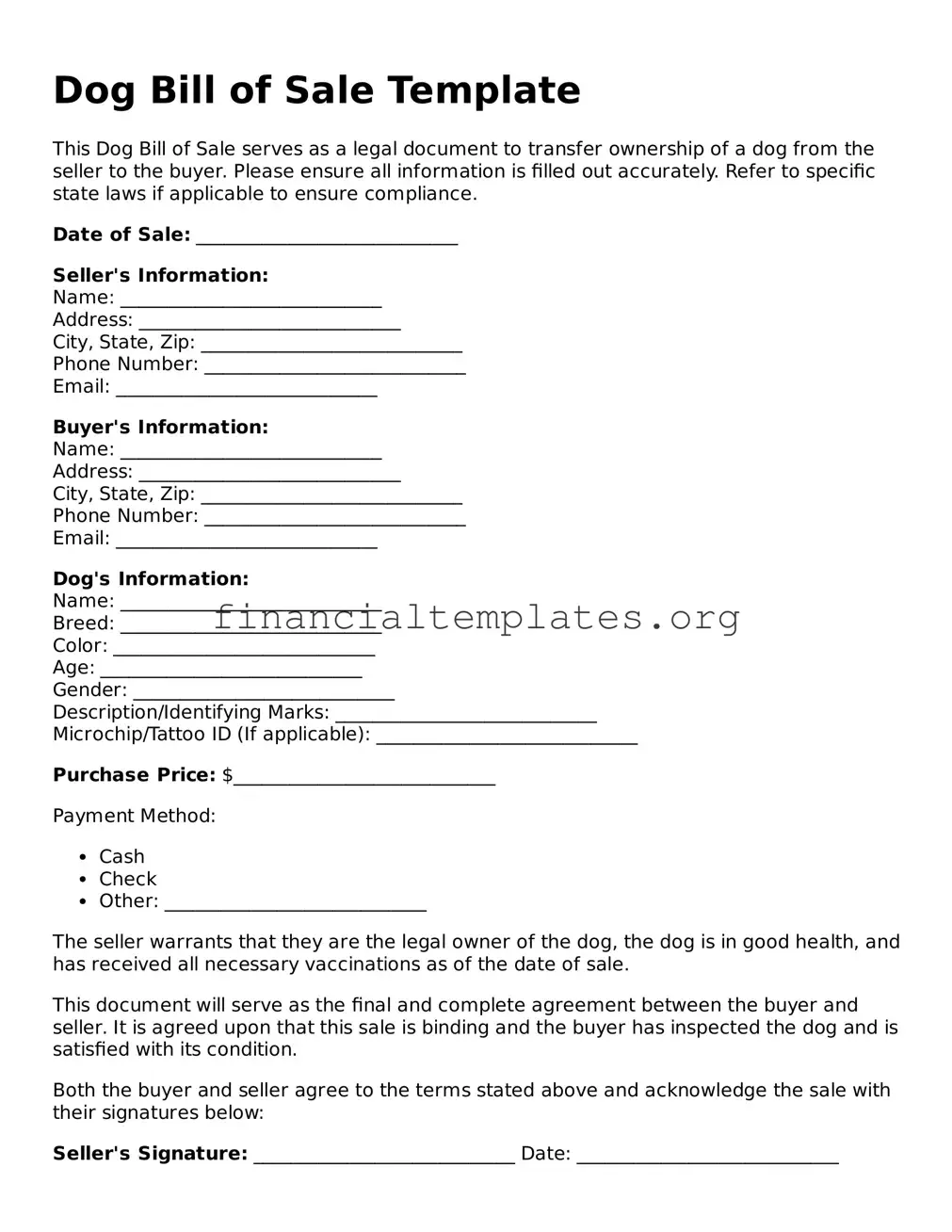A Cat Bill of Sale form, much like its counterpart for dogs, serves as a legal record for the sale and transfer of ownership of a cat from the seller to the buyer. This document outlines key details such as the cat's breed, age, health condition, and the sale price, similarly ensuring that all aspects of the transaction are recorded and agreed upon by both parties. It provides a structured way to document the sale, clearly defining the transfer of ownership and the responsibilities of each party involved in the sale of a feline companion.
The Automobile Bill of Sale form shares similarities with the Dog Bill of Sale in that it is used to document the sale and transfer of ownership, but in this case, for a vehicle. It captures essential information such as the make, model, year, VIN (Vehicle Identification Number), and the sale price. Like the Dog Bill of Sale, it serves to protect both the buyer and the seller by recording the conditions and terms of the sale, ensuring a clear understanding between both parties and providing legal protection if disputes arise post-sale.
A Horse Bill of Sale form functions similarly to the Dog Bill of Sale, acting as a legal document that records the sale and change of ownership of a horse. It details the horse's pedigree, health information, and any other pertinent details, along with the agreed-upon price. This document solidifies the agreement between the seller and the buyer, safeguarding both parties' interests and providing a legal framework that helps prevent potential misunderstandings or legal issues regarding the horse's sale and ownership status.
The Boat Bill of Sale form is another document that parallels the Dog Bill of Sale, albeit for the sale of a boat. It includes specific information about the boat such as the make, model, year, and Hull Identification Number (HIN), along with the sale price. This document ensures that the transaction details are clearly laid out and agreed upon, much like the Dog Bill of Sale, guaranteeing a smooth transfer of ownership and serving as a legal record of the transaction.
A Firearm Bill of Sale form is akin to the Dog Bill of Sale as it is a legal document used to record the sale and transfer of a firearm from one individual to another. Key information captured includes the make, model, caliber, and serial number of the firearm, alongside the sale price. This documentation is vital for both buyer and seller, providing proof of transfer and ownership, and ensuring that the sale complies with legal requirements, reflecting the same protection and peace of mind the Dog Bill of Sale offers in the context of pet ownership.
An Equipment Bill of Sale form is similar to the Dog Bill of Sale because it provides a legal framework for the sale and transfer of ownership of equipment. It details the equipment's specifications, condition, and sale price, ensuring that both parties have a clear understanding of the transaction's terms. This form protects the rights and interests of both the buyer and the seller, offering a documented agreement that can help resolve disputes and confirm the transfer of ownership legally and transparently.
A Livestock Bill of Sale is closely related to the Dog Bill of Sale, as it documents the sale and transfer of various types of livestock from the seller to the buyer. This document includes specific information about the livestock, such as species, breed, health, and quantity, mirroring the detailed approach seen in the Dog Bill of Sale. It serves as an essential record that confirms the agreement's terms, ensures both parties' accountability, and provides legal protection in the event of future disputes.
The General Bill of Sale is a versatile document that, like the Dog Bill of Sale, is used to document the sale and transfer of personal property items from one party to another. While it can apply to a wide range of items, the structure of detailing the item(s) sold, the sale price, and the parties' agreement is consistent. This broad applicability makes the General Bill of Sale a fundamental tool for recording transactions, offering clarity, and legal safeguards for both buyer and seller in various scenarios.
A Furniture Bill of Sale form shares similar characteristics with the Dog Bill of Sale by documenting the sale and transfer of furniture pieces. It includes descriptions of the furniture, conditions of sale, and the agreed price, ensuring a mutually understood and agreed-upon transaction. The Furniture Bill of Sale helps protect both parties by providing a legal record of the sale, aiding in dispute resolution, and ensuring a clear transfer of ownership, just as the Dog Bill of Sale secures the sale of a pet.
The Aircraft Bill of Sale form parallels the Dog Bill of Sale through its purpose of recording the sale and transfer of ownership of an aircraft from one party to another. It captures detailed information such as the aircraft's make, model, serial number, and sale price. Like the Dog Bill of Sale, this document acts as a protective measure, ensuring that both parties have a clear and legal agreement that outlines the terms of the sale, thereby mitigating potential disputes and clarifying the transfer of ownership responsibilities.
